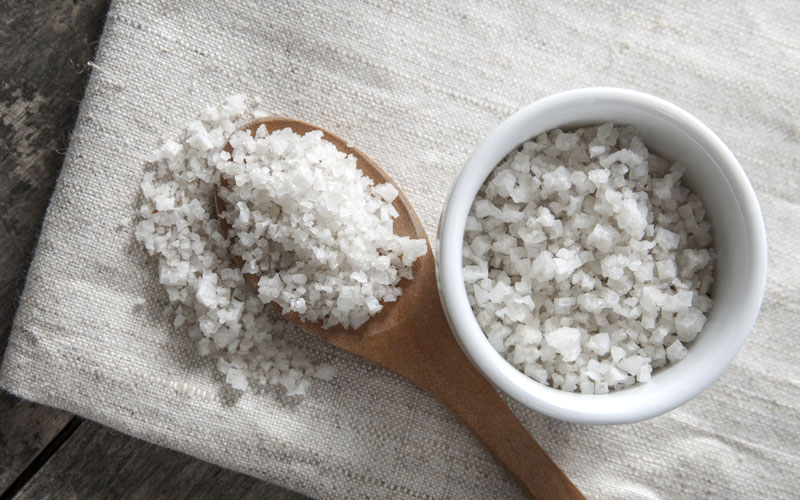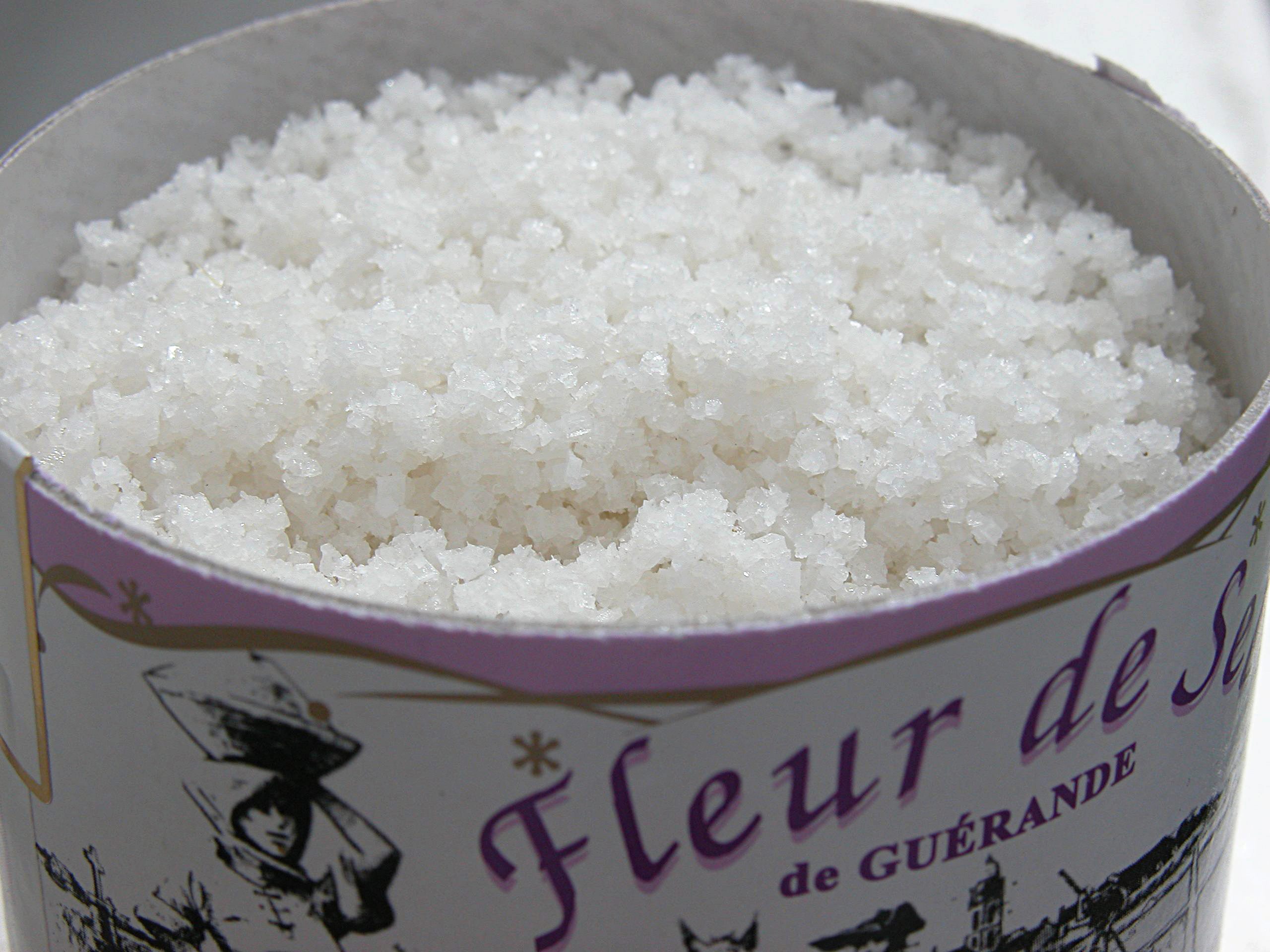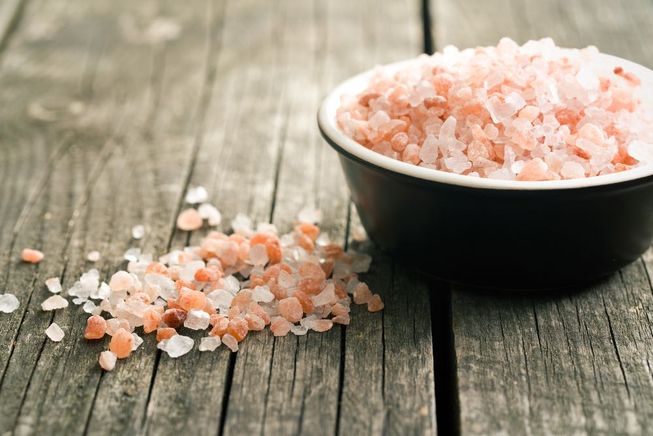Salt, one of the fundamental components for life, is a natural mineral made up of two elements – sodium and chloride. All living creatures need a supply of salt to survive. Salt has the ability to preserve foods and this preservative property was exploited thousands of years ago before the invention of the fridge freezer. Families from past civilisations could store out-of-season produce and they had the option of carrying salted foods during long distance travel without spoiling.
Although easily obtainable now, it was once a highly prized product to the point of being used as currency amongst the Greeks and Hebrews and other such civilisations. Now, some types of salts are relatively cheap to buy.
Salt can be found naturally in the sea, but can also be mined from salt mines on land. The quality of the salt you buy varies depending on where and how it was extracted. Thus, it is important that we choose the correct salt in our diets that will benefit us and not harm us considering the amount we use on a daily basis.
Sea salts and table salts are generally produced by the evaporation of salt water (brine). Evaporation can be through solar evaporation, where brine is added to a series of ponds that evaporate the water by the suns heat. The brine becomes concentrated as it progresses through these ponds where eventually a salt bed is produced and raked off. Evaporation can also occur using the open or closed vacuum pan system, where water is heated in big pans in order to crystallise the salt which is then scraped off.
Table Salt
This salt is manufactured from natural salt, but nowadays it’s made mainly from crude oil flake leftovers! It is heated to 650 degrees Celsius, where its chemical composition is altered during this process and almost all of the nutritional benefits are destroyed. Today, most table salt manufacturers fortify the salt with iodine, as well as other unnatural chemicals to their products. These chemicals include everything from manufactured forms of sodium, iodide, sodium bicarbonate, fluoride, anti-caking agents, toxic amounts of potassium iodide and aluminium derivatives. On top of that, they further refine the salt by bleaching it white for aesthetic purposes, to create that clean pure appearance. Natural salt is never white but shades of grey, black, and reddish hues.
These naturally occurring unrefined salts are actually alkaline minerals that help keep us hydrated, balance our sodium-potassium ratios, as well as fill the body with powerful electrolytes. They also contain all of the trace elements needed for proper immune, thyroid and adrenal function (that are completely stripped out of table salt). Natural salt forms, such as sea salts like Celtic and fleur de sel or mined salts like Himalayan and black salt, also boost the creation of digestive enzymes and juices that allow us to extract and assimilate other vitamins and nutrients from the food we eat.
Sea salts: This salt is made using evaporated seawater. It generally has larger and coarser crystals than table salt. It is harvested in a number of places in the world, but there are a few that stand out from the rest due to their beneficial properties and uniqueness in extraction:-
Celtic Sea Salt

This type of sea salt is harvested using a 2,000-year-old method from the waters of the Celtic Sea in Brittany, France. The salt fields of Brittany are lined with a natural layer of clay and sand. It is naturally aired and sun-dried in clay ponds and gathered with wooden tools to preserve its living enzymes. The method of hand raking of the moist crystals is followed by a dedicated group of professional natural salt farmers in Brittany, who carry out the traditional skills that have been passed down through generations. This has allowed the preservation of the salt in its natural state which is highly beneficial to one’s health as they possess many therapeutic qualities. Celtic sea salt claims to be enriched with all the 84 essentials minerals and components needed by the human body for optimum health. It may aid in alkalising the body, balancing blood sugars, eliminating mucus build up, building immunity, improving brain function, increasing energy, providing electrolyte balance, promoting restful sleep, preventing muscle cramp, regulating heartbeat and blood pressure.
Fleur de Sel

The name of this salt means "flower of salt" and it is a delicately flavoured salt originally from the Coastal salt ponds in France and Portugal. It is hand harvested by manually scraping the top layer off the salt before it sinks to the bottom of a large salt pan. The conditions have to be just right with lots of sun and wind for it to "bloom" like a flower on the surface of the water. It is very high in minerals, due to the well controlled evaporation process of the paludiers (salt rakers). Some of the minerals it contains are calcium, magnesium, potassium, iron, zinc, manganese, and many trace elements. These combine with the sodium chloride to make up a complete network of nutrients similar to Celtic salt, which becomes readily available to the body. It is considered the caviar of sea salts due to its relative scarcity and its labour intensive production. For this reason it is one of the most expensive salts to purchase.
Mined salt: In the 19th century, salt mines were found and salt was extracted by deep shaft or solution mining. Deep Shaft mining is where shafts are sunk down to the floor of the mine, and rooms are carefully constructed by drilling, cutting and blasting between the shafts, creating a checkerboard pattern. After the salt is removed and crushed, a conveyor belt hauls it to the surface. Most salt produced this way is used as rock salt. In solution mining, wells are erected over salt beds or domes (deposits of salt forced up out of the earth by tectonic pressure) and water is injected to dissolve the salt. Then the salt solution, or brine, is pumped out and taken to a plant for evaporation.
Himalayan Pink Salt

This salt is harvested in the foothills of the Himalayan mountain range of the Khewra Salt Mine, located in the Punjab region of Pakistan. With a history dating back to Earth’s creation, it is believed to be composed of dried remnants of the original primal sea, thus being a form of fossilised sea salt. It gets its characteristic pink colour from the amount of minerals in contains, particularly iron and boasts all 84 elements needed by the human body just like Celtic sea salt. Because of its high nutrient load, doctors of functional medicine report that regularly eating Himalayan salt may help: Regulate the water content throughout your body, promote healthy pH balance in your cells (particularly your brain cells), promote blood sugar health, can help reduce the signs of ageing, assist in the generation of hydroelectric energy in cells in your body, absorb food particles through your intestinal tract, support respiratory health, promote sinus health, prevent muscle cramps, promote bone strength, regulate sleep, support libido, promote vascular health, regulate your blood pressure with sufficient water and potassium intake.
General health benefits of natural salt
The idea that salt leads to hypertension has never been scientifically supported. On the contrary, studies show that a reduced-sodium diet leads to health issues. In one study (1), subjects consuming less sodium per day had significantly higher risk of death than the subjects who consumed the recommended dose of sodium per day. Salt also aids blood sugar control by improving insulin sensitivity. A low-salt diet increases insulin resistance and even moderate dietary salt restriction is shown to cause systemic insulin resistance (2,3).
Salt is a great antihistamine. A pinch of salt sprinkled on the tongue may help improve an allergic reaction or an asthma attack (4). Your body also needs salt to maintain the proper stomach pH (5). Proper stomach acid levels are essential for good digestion. Unrefined natural salt also provides the rich minerals directly to our cells to enhance resistance to infections and bacterial diseases. It also helps our body to heal quickly post surgery, sickness, burns, etc. Bathing wounds in pure salt water helps wounds to heal faster. It also eases sore throats by gargling or sipping salty water.
Salt lowers adrenaline spikes. Adrenaline is a necessary and important stress hormone. When adrenaline patterns are out of rhythm, it takes a toll on the body. Natural salt boasts anti-stress and anti-excitatory qualities due to its suppression of stress hormones (6). It also improves sleep quality. One immediate fix to help you go back to sleep is to take a pinch of natural salt and sugar (or salt and honey, if you prefer) sprinkled on the tongue to calm the adrenaline peak. Salt also supports thyroid function by reducing circulating stress hormones.
Salt also balances hormones that prevent the loss of other essential minerals. Hormone and nutrition researcher Ray Peat (7) explains the correlation between the salt-regulating hormone aldosterone and mineral loss: One of the things that happen when there isn’t enough sodium in the diet is that more aldosterone is synthesized. Aldosterone causes less sodium to be lost in the urine and sweat, but it achieves that at the expense of the increased loss of potassium, magnesium, and probably calcium. Magnesium deficiency is extremely common, but a little extra salt in the diet makes it easier to retain the magnesium in our foods.
Salt encourages a healthy weight and fast metabolism (8). One study showed that increased salt intake leads to an increase in the elimination of cortisol and lower blood cortisol levels. Imbalanced or excess cortisol means weight gain and a stagnant metabolism. Having more salt in the diet also correlates with increased thermogenesis–heat production by the body (9). It can also provide essential minerals to the muscles and prevents muscle cramps.
Salt supports hyperosmolarity of the extracellular fluid (the fluid outside the cell). Slight hyperosmolarity means more solutes in the extracellular fluid than in the cell–actually increases the cell’s metabolic rate (7). That basically means salt can speed up your metabolism! On the other hand, when the extracellular fluid is hypo-osmotic in relation to the cell, it impairs the breakdown of proteins and glucose and thereby lowers the cell’s metabolism.
Lastly, salt makes food taste good. So you get to enjoy a tasty meal without the added calories. It's all about quality not quantity and there are still other varieties of unrefined salts to discover such as Real Salt from the ancient sea beds of Utah or mined black salt from India. Having more salt in your diet means drinking more fluids such as water rather than juices or teas. Drinking more will enable you to rebalance your electrolytes in your body keeping your blood pH in check. So from now on, don't shy away from the saltshaker. Pick the salt that's right for you and add "to taste"!
Recipes for Health
Salt Sole - a powerful detoxing rejuvenating elixir
Sole is water fully saturated with unrefined salt. When the natural salt dissolves in water, it results in a concentrated, electrically charged matrix of the 84 trace minerals in the salt. The ionic salt and trace minerals nourish each cell in your body.
To make the salt sole, you need:
§ Himalayan, Celtic or any other unrefined salt
§ Filtered water
§ Plastic utensils
§ Glass jar with plastic lid
Method:
1. Fill a glass jar about 1/4 of the way with himalayan salt (or celtic sea salt), either ground or in chunks. Fill the rest of the way with filtered water. Add a plastic lid (not metal!), shake and let sit overnight. You should always have some un-dissolved salt in the jar, this means the water is fully saturated. Add more salt if needed.
2. In the morning, take 1 tsp of sole, mixed into some room temperature water, upon waking. Never use metal utensils with your sole!
3. Keep refilling your jar with salt and water when it runs low. It lasts indefinitely.
Himalayan detox salt bath
Adding himalayan salt to a bath creates a rejuvenating, detoxing, and relaxing at-home spa. The salt water carries the electrical charge of the salt, along with the dissolved minerals. A salt bath helps draw out toxins, deep cleanses the skin, and helps cleanse the body energetically.
Add 2-3 cups of himalayan salt to a warm bath, soak in this solution for 30 minutes and feel your muscles relax.
Sources
https://en.m.wikipedia.org/wiki/History_of_salt
http://www.mnn.com/food/healthy-eating/stories/what-are-the-different-types-of-salt-and-what-are-they-used-for
http://www.realsimple.com/food-recipes/cooking-tips-techniques/cooking/six-types-salt
http://draxe.com/10-benefits-celtic-sea-salt-himalayan-salt/
http://juicing-for-health.com/sea-salt-health-benefits.html
http://science.howstuffworks.com/innovation/edible-innovations/salt4.htm
http://empoweredsustenance.com/unrefined-salt-brands-compare/
http://empoweredsustenance.com/salt-is-good-for-you/
http://empoweredsustenance.com/himalayan-salt-benefits/
1 http://www.realsalt.com/wp-content/uploads/2010/08/American-Journal-of-Med-Full-Article-Sodium-Intake-and-Mortality.pdf
2 http://www.metabolismjournal.com/article/S0026-0495(10)00329-X/abstract
3 http://www.ncbi.nlm.nih.gov/pubmed/10371376
4 Your Body's Many Cries for Water, by Dr Batmanghelidj, 2008.
5 http://empoweredsustenance.com/heal-low-stomach-acid-naturally/
6 Eat for Heat: The Metabolic Approach to Food and Drink, by Matt Stone.
7 http://raypeat.com/articles/articles/salt.shtml
8 http://www.ncbi.nlm.nih.gov/pubmed/12970284
9 http://www.ncbi.nlm.nih.gov/pubmed/6086543
